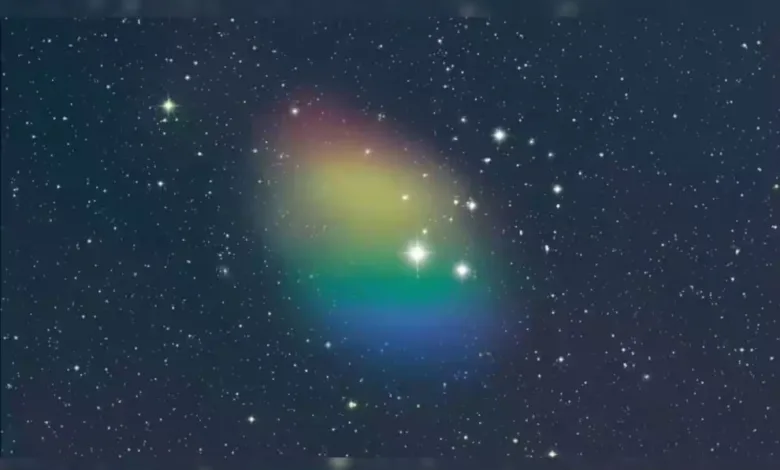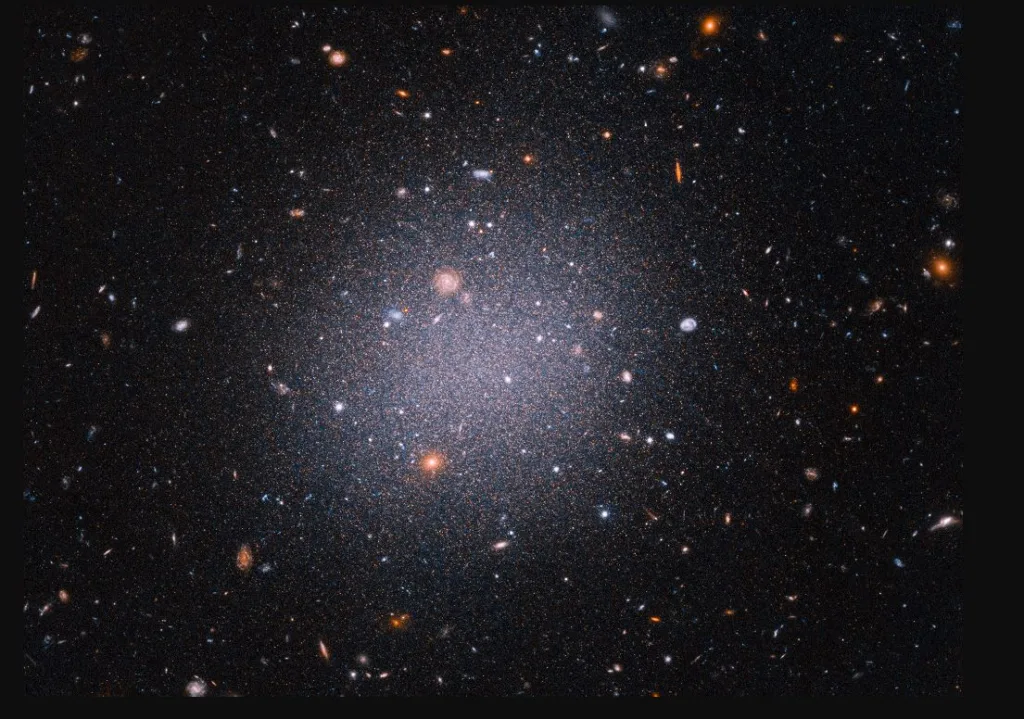

J0613+52: The Dark Galaxy Breakthrough That’s Rattling the Foundations of Astronomy
Astronomers have stumbled upon a celestial enigma, a dark galaxy named J0613+52 that appears to contain no visible stars. Challenging conventional wisdom about star and galaxy formation. This discovery was unveiled at the annual meeting of the American Astronomical Society, sparking speculation among scientists about the nature of this peculiar cosmic entity.
Situated a staggering 270 million light-years away, J0613+52 is classified as a Low Surface Brightness (LSB) galaxy, typically characterized by a faint glow due to dispersed gases, resulting in minimal star presence. However, what sets this dark galaxy apart is its apparent absence of stars, hinting at the possibility of it being a rare, primordial galaxy.
Senior scientist Karen O’Neil and her team at the Green Bank Observatory made the accidental discovery while investigating LSBs. The object was found to be brimming with gas, containing one to two billion solar masses of hydrogen, yet devoid of stars. O’Neil remarked, “It’s too far from other galaxies for them to help trigger star formation through any encounters.” This isolation suggests that J0613+52 is both undisturbed and underdeveloped, presenting a unique celestial puzzle.
The findings suggest that J0613+52 might be a remarkably stable relic from the early cosmos, preserving its pristine state for billions of years without significant gravitational interactions or neighboring galaxies disturbing its equilibrium. The absence of heavy metals, often indicative of star presence, further deepens the mystery surrounding this dark galaxy.
The discovery has left astronomers with more questions than answers. O’Neil expressed, “Is this a unique galaxy or Are there any more LSBs like this out there?” To unravel this cosmic riddle, future observations will focus on searching for heavy metals that could provide clues about the existence of stars within J0613+52.
The team believes that a comprehensive sky survey, facilitated by instruments like the Green Bank Telescope, could unveil more of these ultra-dark LSBs, shedding light on their elusive nature. However, the challenge lies in the low density of gas, making these galaxies potentially difficult to observe in wavelengths other than radio waves.


As the astronomical community grapples with the implications of this unforeseen discovery, the quest for understanding the mysterious J0613+52 continues, opening up new frontiers in our exploration of the cosmos.





